Related Research Articles

AIM was an instant messaging and presence computer program created by AOL, which used the proprietary OSCAR instant messaging protocol and the TOC protocol to allow registered users to communicate in real time.

Google Groups is a service from Google that provides discussion groups for people sharing common interests. Until February 2024, the Groups service also provided a gateway to Usenet newsgroups, both reading and posting to them, via a shared user interface. In addition to accessing Google groups, registered users can also set up mailing list archives for e-mail lists that are hosted elsewhere.

Gateway, Inc., previously Gateway 2000, Inc., was an American computer company originally based in Iowa and South Dakota. Founded by Ted Waitt and Mike Hammond in 1985, the company developed, manufactured, supported, and marketed a wide range of personal computers, computer monitors, servers, and computer accessories. At its peak in the year 2000, the company employed nearly 25,000 worldwide. Following a seven-year-long slump, punctuated by the acquisition of rival computer manufacturer eMachines in 2004 and massive consolidation of the company's various divisions in an attempt to curb losses and regain market share, Gateway was acquired by Taiwanese hardware and electronics corporation Acer, in October 2007 for US$710 million.

Microsoft Forefront Threat Management Gateway, formerly known as Microsoft Internet Security and Acceleration Server, is a discontinued network router, firewall, antivirus program, VPN server and web cache from Microsoft Corporation. It ran on Windows Server and works by inspecting all network traffic that passes through it.

The 3Com Ergo Audrey is a discontinued internet appliance from 3Com. It was released to the public on October 17, 2000, for USD499 as the only device in the company's "Ergo" initiative to be sold. Once connected to an appropriate provider, users could access the internet, send and receive e-mail, play audio and video, and synchronize with up to two Palm OS-based devices.

A tablet computer, commonly shortened to tablet, is a mobile device, typically with a mobile operating system and touchscreen display processing circuitry, and a rechargeable battery in a single, thin and flat package. Tablets, being computers, have similar capabilities, but lack some input/output (I/O) abilities that others have. Modern tablets largely resemble modern smartphones, the only differences being that tablets are relatively larger than smartphones, with screens 7 inches (18 cm) or larger, measured diagonally, and may not support access to a cellular network. Unlike laptops, tablets usually run mobile operating systems, alongside smartphones.
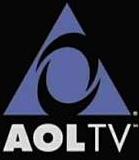
AOL TV was the name of both a thin client which uses a television for display, and the online service that supports it, both of which were launched in June 2000 to compete with WebTV.
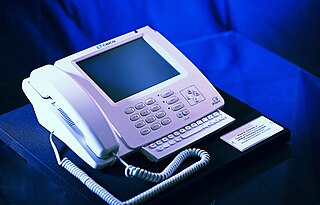
The Linksys iPhone was a line of internet appliances from Cisco Systems. The first iPhone model—released by Infogear in 1998—combined the features of a regular phone and a web terminal. The company was later purchased by Cisco and no new products were marketed under the name between 2001 and 2006. At the end of 2006, Cisco rebranded its Linksys VoIP-based phones under the name, shortly before Apple released an iPhone of its own. This led to a trademark dispute between the two companies, which was resolved on February 20, 2007.
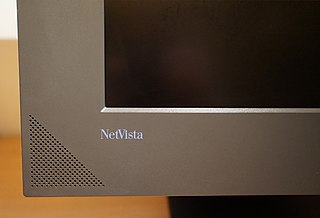
NetVista is an umbrella name for a variety of products manufactured by IBM.
Quack.com was an early voice portal company. The domain name later was used for Quack, an iPad search application from AOL.
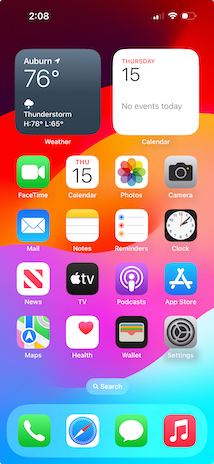
iOS is a mobile operating system developed by Apple exclusively for its smartphones. It was unveiled in January of 2007 for the first-generation iPhone, launched in June 2007.
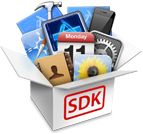
The iOS SDK, formerly the iPhone SDK, is a software development kit (SDK) developed by Apple Inc. The kit allows for the development of mobile apps on Apple's iOS and iPadOS operating systems.

Blue Coat Systems, Inc., was a company that provided hardware, software, and services designed for cybersecurity and network management. In 2016, it was acquired by and folded into Symantec. In 2019 was, as part of Symantec Enterprise division, sold to Broadcom.

AirDrop is a proprietary wireless ad hoc service in Apple Inc.'s iOS, macOS, iPadOS and visionOS operating systems, introduced in Mac OS X Lion and iOS 7, which can transfer files among supported Macintosh computers and iOS devices by means of close-range wireless communication. This communication takes place over Apple Wireless Direct Link 'Action Frames' and 'Data Frames' using generated link-local IPv6 addresses instead of the Wi-Fi chip's fixed MAC address.
AOL Hometown was a web hosting service offered by AOL. It offered 12 megabytes of server space for AOL subscribers to publish their own websites, and included a 10-step form-driven page creator called 1-2-3 Publish and a WYSIWYG online website builder called Easy Designer, neither of which required knowledge of HTML. In 2001, AOL Hometown estimatedly had 11 million websites and a new website was added to it every eight seconds. By 2002, AOL Hometown had grown to 14 million websites. It was shut down on 31 October 2008.
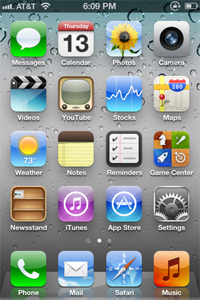
iOS 5 is the fifth major release of the iOS mobile operating system developed by Apple Inc., being the successor to iOS 4. It was announced at the company's Worldwide Developers Conference on June 6, 2011, and was released on October 12, 2011. It was succeeded by iOS 6 on September 19, 2012.
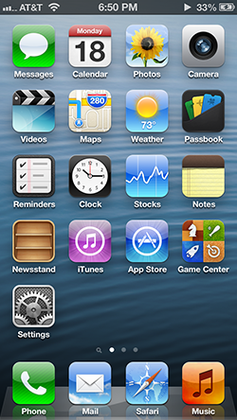
iOS 6 is the sixth major release of the iOS mobile operating system developed by Apple Inc, being the successor to iOS 5. It was announced at the company's Worldwide Developers Conference on June 11, 2012, and was released on September 19, 2012. It was succeeded by iOS 7 on September 18, 2013.
The iPad Mini is a line of small tablet computers designed, developed, and marketed by Apple Inc. It is a sub-series of the iPad line of tablets, with screen sizes of 7.9 inches and 8.3 inches. The first-generation iPad Mini was announced on October 23, 2012, and was released on November 2, 2012, in nearly all of Apple's markets. It featured similar internal specifications to the iPad 2, including its display resolution.

The iPad Mini is the first generation, known retrospectively as the iPad Mini 1, of the mini tablet computer designed, developed, and marketed by Apple Inc. It was announced on October 23, 2012, as the fourth major product in the iPad line and the first of the iPad Mini line. It features a reduced screen size of 7.9 inches (20 cm), compared to the 9.7-inch (25 cm) display on standard iPads at that time. Its internal specifications resemble that of the iPad 2, including its display resolution.

iOS 9 is the ninth major release of the iOS mobile operating system developed by Apple Inc., being the successor to iOS 8. It was announced at the company's Worldwide Developers Conference on June 8, 2015, and was released on September 16, 2015. It was succeeded by iOS 10 on September 13, 2016.
